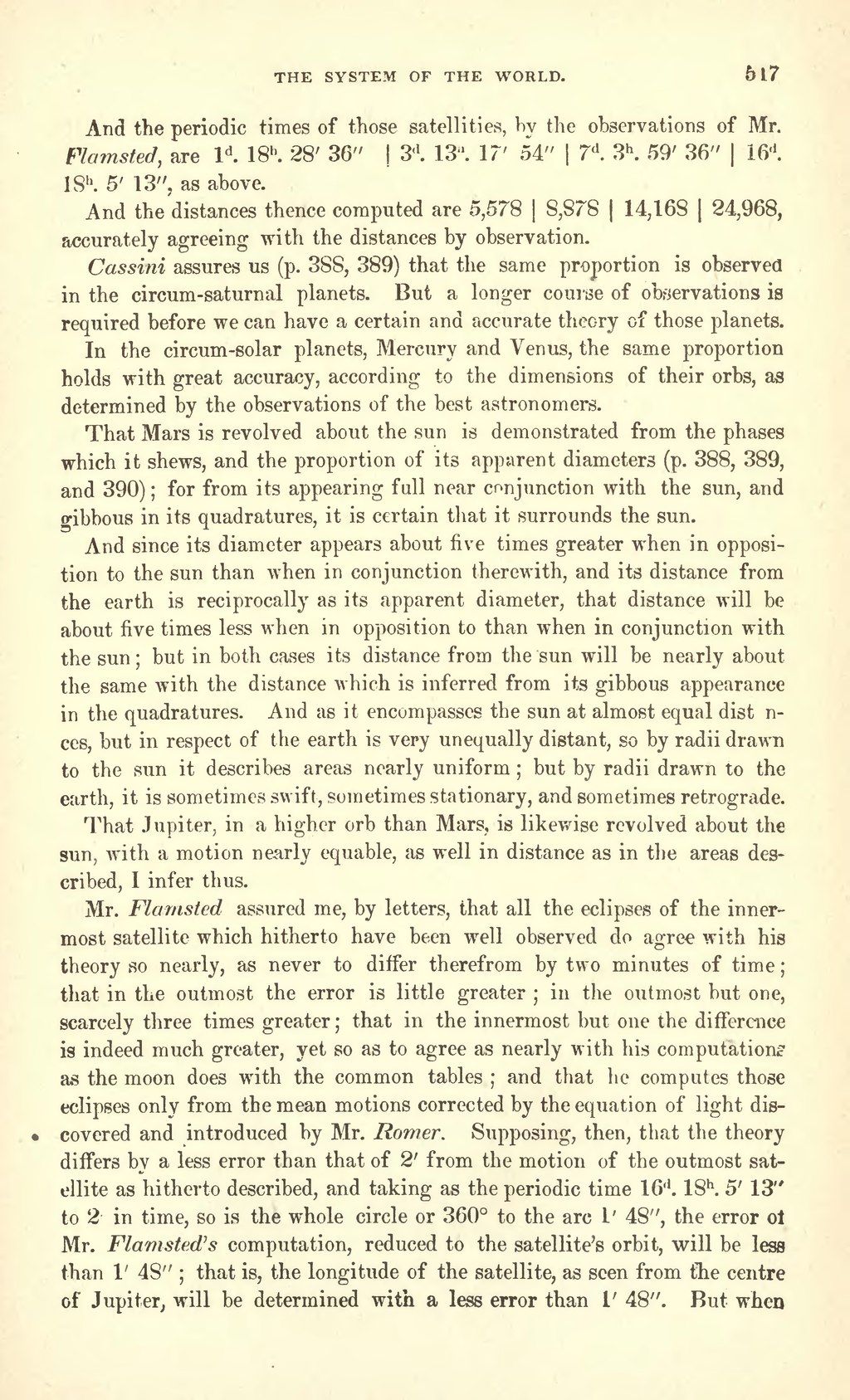And the periodic times of those satellites, by the observations of Mr. Flamsted, are 1d.18h.28′ 36″ | 3d.13h.17′ 54″ | 7d.3h.59′ 36″ | 16d.18h.5′ 13″, as above.
And the distances thence computed are 5,578 | 8,878 | 14,168 | 24,968, accurately agreeing with the distances by observation.
Cassini assures us (p. 388, 389) that the same proportion is observed in the circum-saturnal planets. But a longer course of observations is required before we can have a certain and accurate theory of those planets.
In the circum-solar planets. Mercury and Venus, the same proportion holds with great accuracy, according to the dimensions of their orbs, as determined by the observations of the best astronomers.
That Mars is revolved about the sun is demonstrated from the phases which it shews, and the proportion of its apparent diameters (p. 388, 389, and 390); for from its appearing full near conjunction with the sun, and gibbous in its quadratures, it is certain that it surrounds the sun.
And since its diameter appears about five times greater when in opposition to the sun than when in conjunction therewith, and its distance from the earth is reciprocally as its apparent diameter, that distance will be about five times less when in opposition to than when in conjunction with the sun; but in both cases its distance from the sun will be nearly about the same with the distance which is inferred from its gibbous appearance in the quadratures. And as it encompasses the sun at almost equal distances, but in respect of the earth is very unequally distant, so by radii drawn to the sun it describes areas nearly uniform; but by radii drawn to the earth, it is sometimes swift, sometimes stationary, and sometimes retrograde.
That Jupiter, in a higher orb than Mars, is likewise revolved about the sun, with a motion nearly equable, as well in distance as in the areas described, I infer thus.
Mr. Flamsted assured me, by letters, that all the eclipses of the inner most satellite which hitherto have been well observed do agree with his theory so nearly, as never to differ therefrom by two minutes of time; that in the outmost the error is little greater; in the outmost but one, scarcely three times greater; that in the innermost but one the difference is indeed much greater, yet so as to agree as nearly with his computations as the moon does with the common tables; and that he computes those eclipses only from the mean motions corrected by the equation of light discovered and introduced by Mr. Romer. Supposing, then, that the theory differs by a less error than that of 2′ from the motion of the outmost satellite as hitherto described, and taking as the periodic time 16d. 18h.5′ 13″ to 2′ in time, so is the whole circle or 360° to the arc 1′ 48″, the error of Mr. Flamsted's computation, reduced to the satellite's orbit, will be less than 1′ 48″; that is, the longitude of the satellite, as seen from the centre of Jupiter, will be determined with a less error than 1′ 48″. But when
